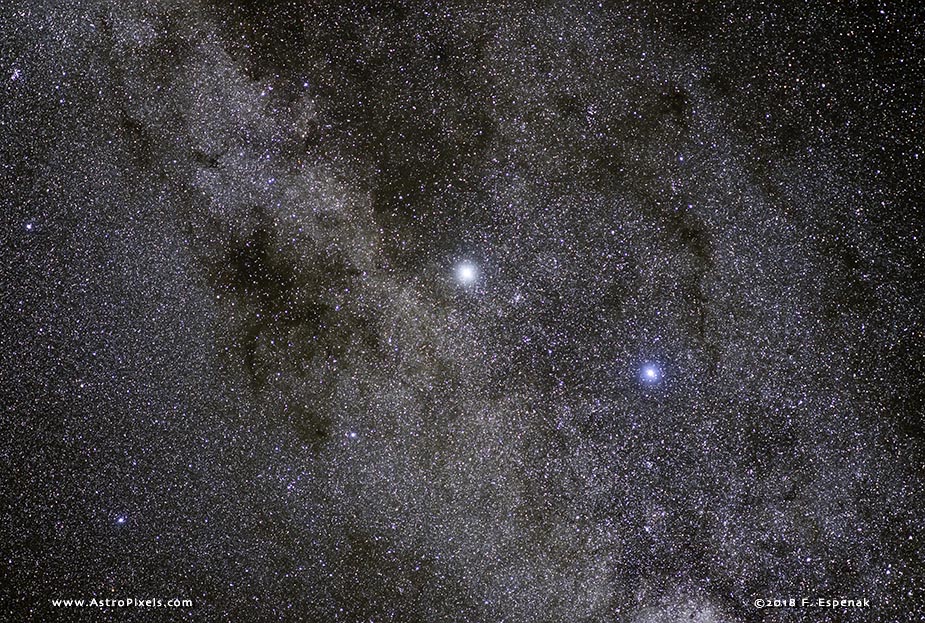Alpha and Beta Centauri
Centaurus is a Southern Hemisphere constellation otherwise known as the The Centaur. Centaurus is one of the 88 modern constellations defined by the International Astronomical Union (Wikipedia).
The most distinguishing features of Centaurus are the two stars Alpha and Beta Centauri.
Alpha Centauri is the closest star system to the Sun, at a distance of 4.37 light-years (1.34 parsecs). It is actually a triple star system. Alpha Centauri A (aka Rigil Kentaurus) and Alpha Centauri B, which form the binary star Alpha Centauri AB, and a small and faint red dwarf, Alpha Centauri C (aka Proxima Centauri), which is gravitationally bound and orbiting the other two at a distance of about 13,000 astronomical units (0.21 ly).
To the unaided eye, the two main components of Alpha Centauri appear as a single point of light with an apparent visual magnitude of −0.27, making it the third-brightest star in the night sky, outshone only by Sirius and Canopus.
Beta Centauri (aka Hadar) is also a triple star system. The system's combined apparent visual magnitude of 0.61 making it the second-brightest star in Centaurus. According to parallax measurements from the astrometric Hipparcos satellite, the distance to this system is about 390 ± 20 light-years (120 ± 6 parsecs).
For more information on Centaurus, see the entries in Wikipedia and U. Wisconsin. For a chart of Centaurus, see Cen (IAU).
Technical Details
- Object: Alpha and Beta Centauri
- Date/Time: 2018 Apr 16 at 05:44 UTC
- Location: Atacama Lodge, San Pedro de Atacama, Chile
- Mount: iOptron iEQ30 Pro GEM
- Lens: Nikkor 105mm f/2.5
- Camera: Nikon D750
- Field of View: 19.4° x 13.0° at 15.5 arc-sec/pixel
- Exposure: 8 x 120s, f/2.8, ISO 1600 and 30s, f/2.8, ISO 1600 with Cokin A840 Diffusion Filter
- File Name: Cen18-01w.jpg
- Pre-Preprocessing (Starry Sky Stacker): Sub Exposures were Flat-Fielded, Registered and Stacked
- Processing (Adobe Lightroom): White Balance, Curves, Noise Reduction
- Processing (Photoshop CC): Layers, Opacity (Cokin A840 Diffusion Filter image)
- Original Image Size: 3977 × 5923 pixels (17.9 MP); 13.3" x 19.4" @ 300 dpi
- Rights: Copyright 2018 by Fred Espenak. All Rights Reserved. See: Image Licensing.
